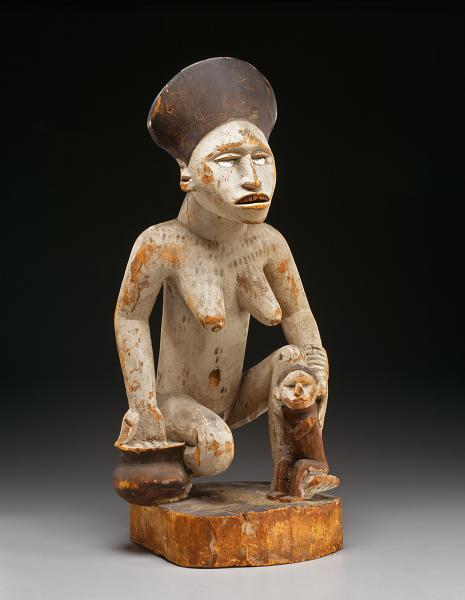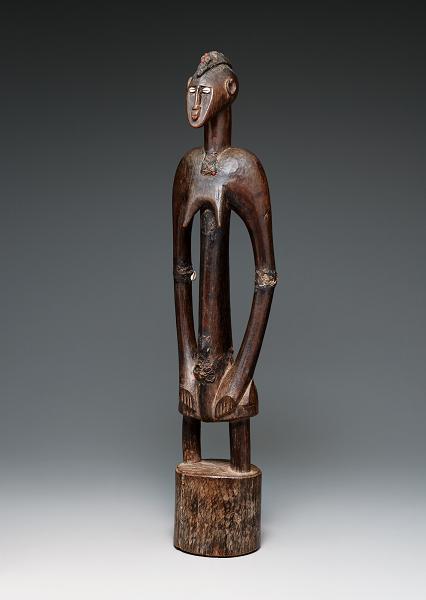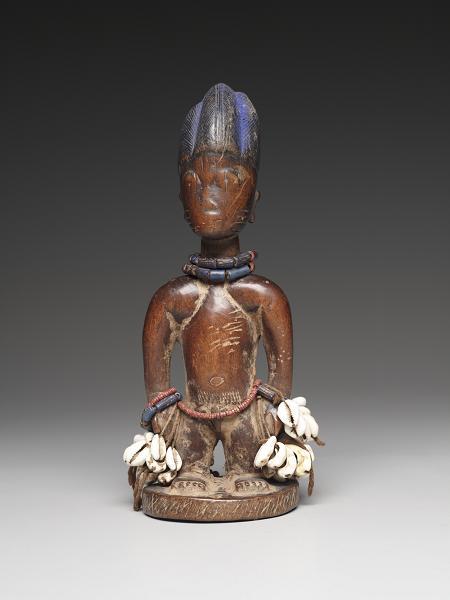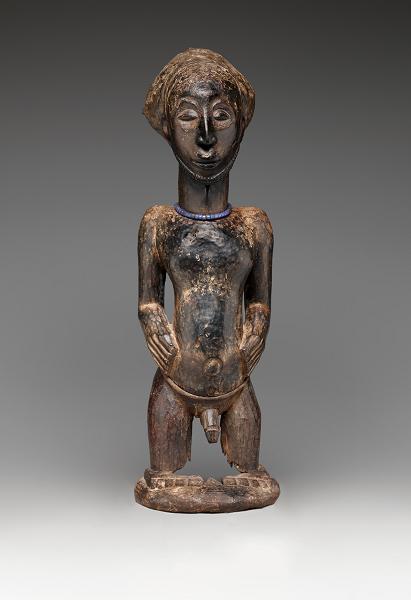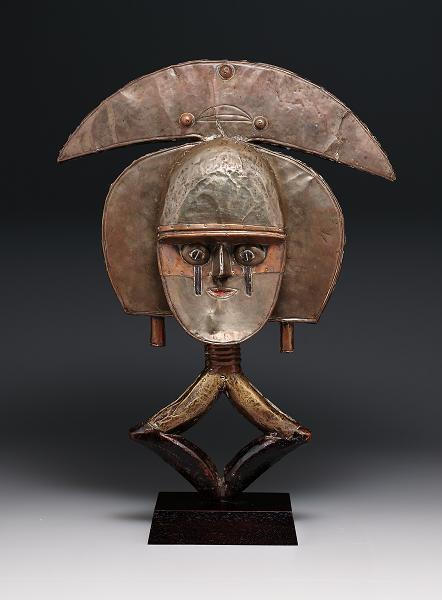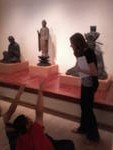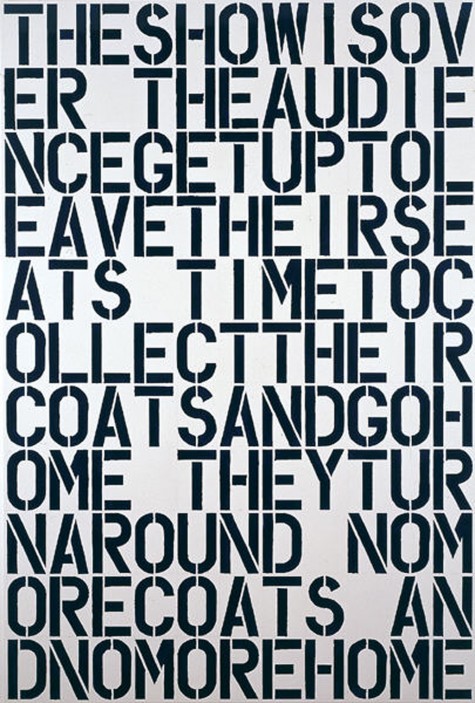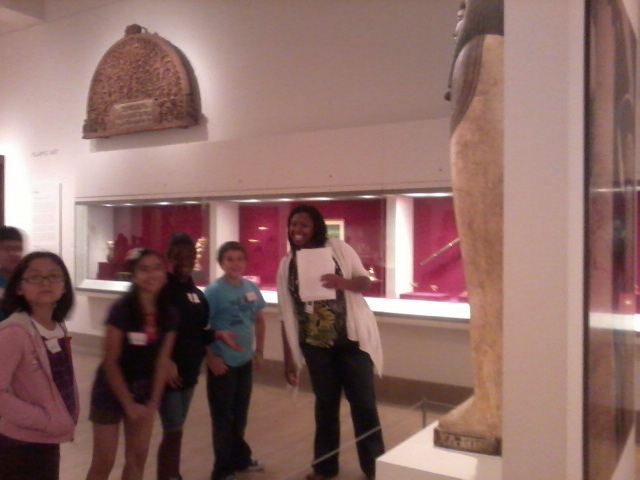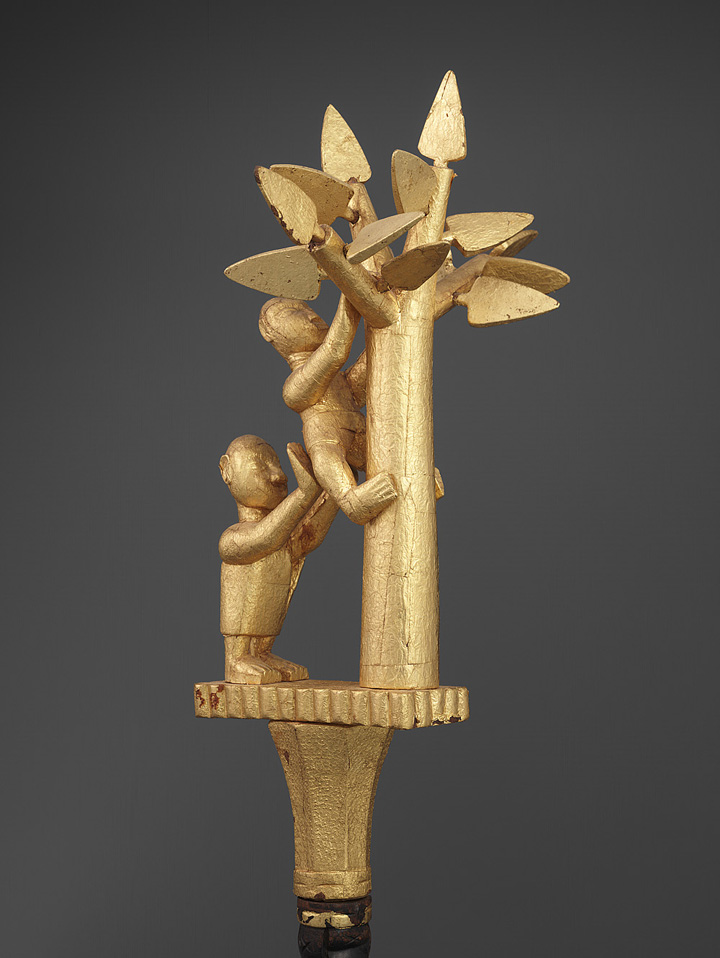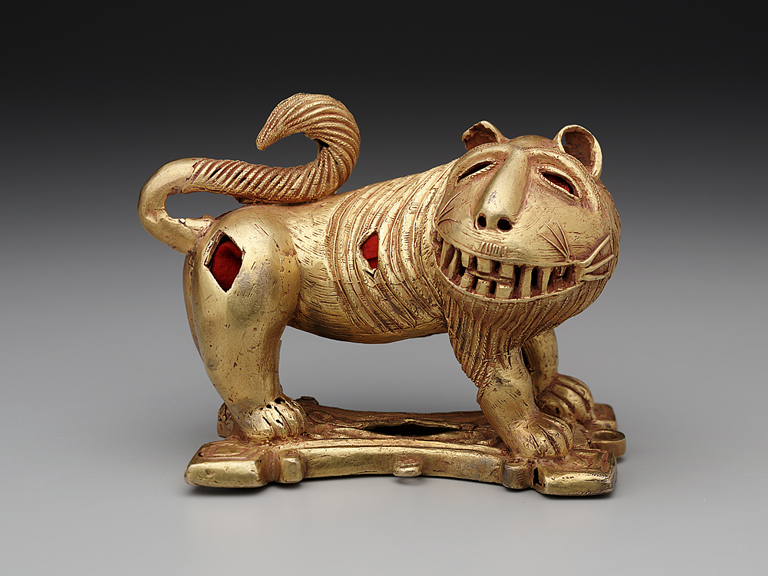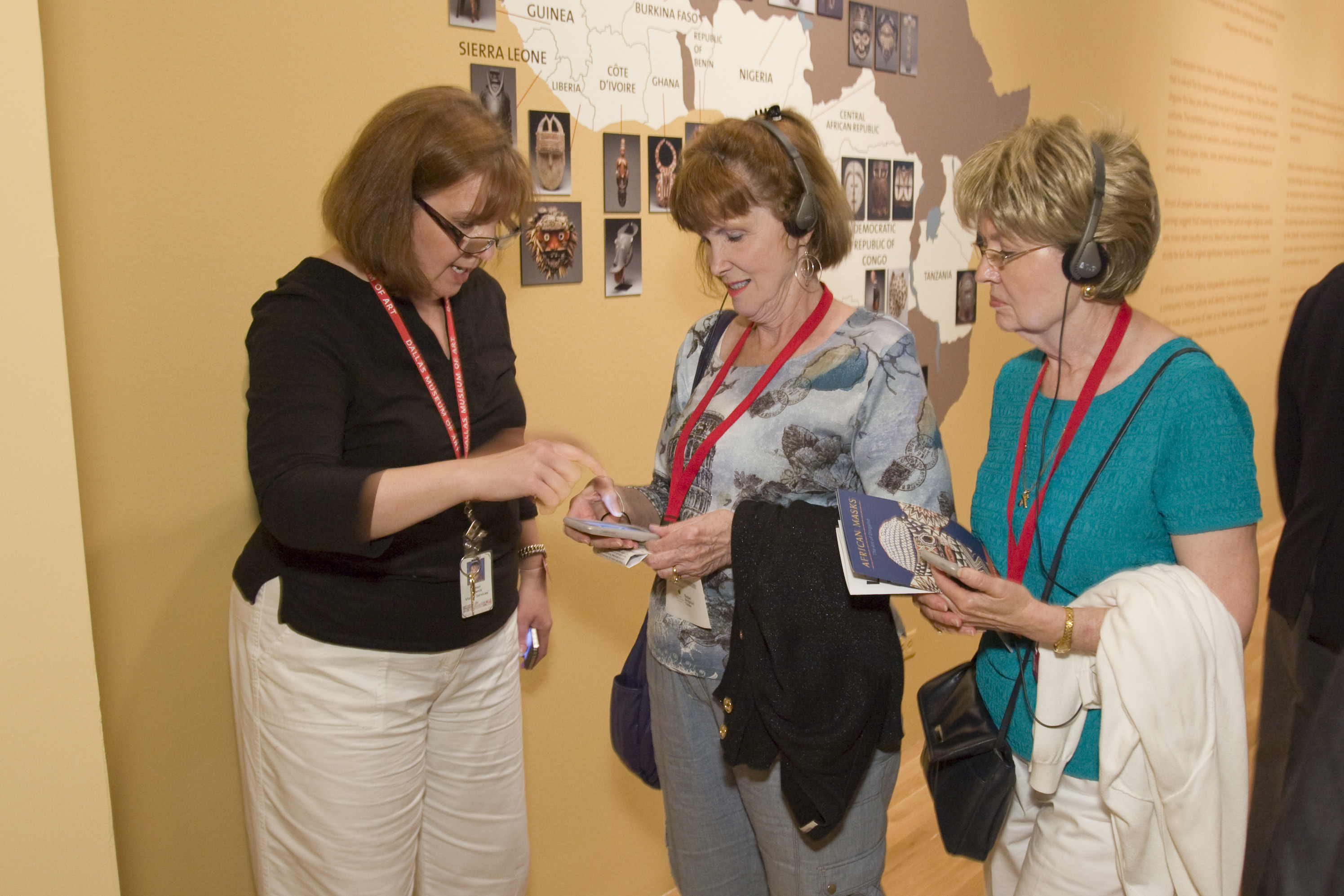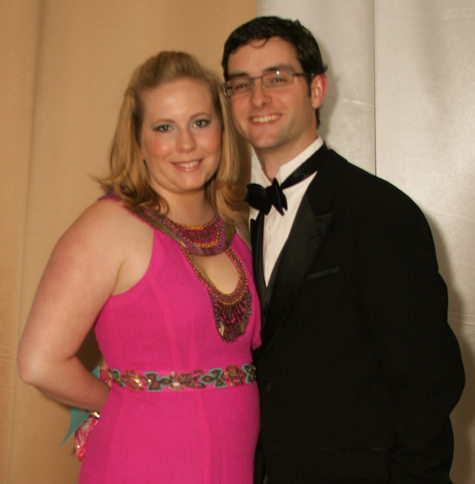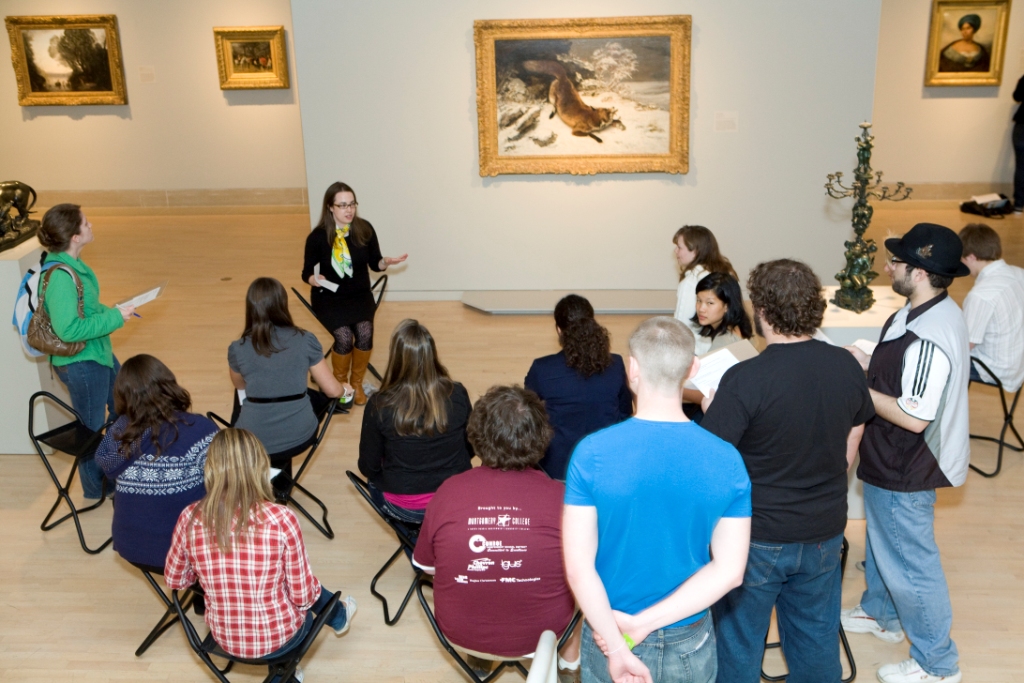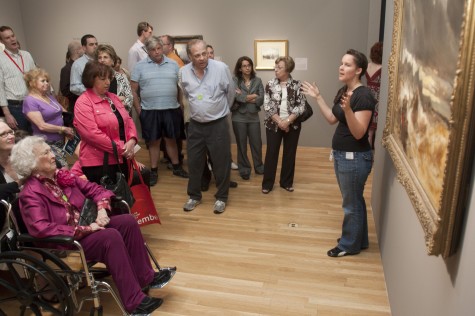
2009 - 2010 McDermott Intern Stacie Jackson leads a tour of "The Lens of Impressionism"
What do Madeleine Albright, Frank Lloyd Wright, Sylvia Plath, and Conan O’Brien have in common? They all started on their career paths as interns, just as many museum curators and educators do. Internships offer invaluable opportunities to try a potential profession on for size; for those who wish to explore a career in museum work, internships provide a great way to gain firsthand experience and insights.
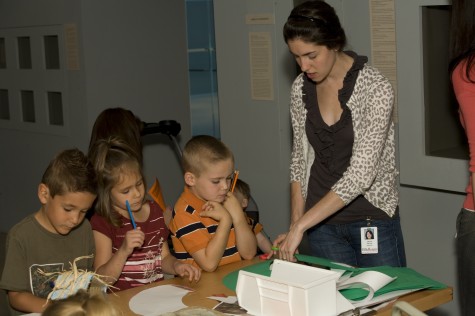
Leticia Salinas, 2009 - 2010 McDermott Intern for Family Experiences, leads a family workshop in the galleries.
Over one hundred people have participated in the Dallas Museum of Art’s McDermott Internship program since its inception, including many current DMA staff members as well as colleagues working at other institutions in Dallas, throughout Texas, and across the country. Each year, eight interns work closely with the Museum’s curators and educators on a variety of projects, including doing research for upcoming installations or exhibitions; writing labels, catalogue entries, and other materials; and developing and facilitating programs for Museum visitors of all ages.
The program was founded in honor of Eugene McDermott, who had a passion for learning and the arts, and the interns have the remarkable opportunity to visit with Margaret McDermott to inaugurate their internship year. Our current interns recently had lunch with Mrs. McDermott, and she encouraged them to “work hard, learn a lot, and have fun” during their nine months at the DMA and in Dallas.
Shannon Karol worked with Dr. Roslyn A. Walker, Senior Curator of the Arts of Africa, the Americas, and the Pacific and The Margaret McDermott Curator of African Art, as a McDermott Curatorial Intern in 2005–2006, and she returned to the DMA as Coordinator of Museum Visits in 2007. I asked Shannon about her experience as a McDermott Intern, and she said:
The best part of being a McDermott Intern is that you are truly a member of the DMA staff. Even though I was a Curatorial Intern, I was able to collaborate with staff members in the Collections and Education departments on projects and installations. I also love the sense of camaraderie that you feel as a McDermott Intern. My fellow interns from that year are still some of my closest friends!
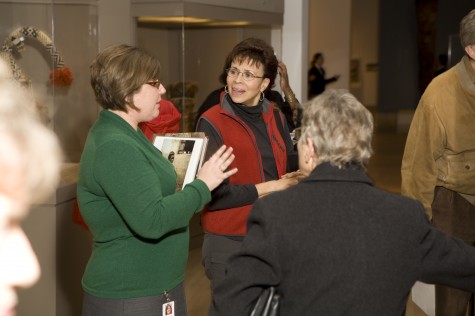
Shannon leads a tour of "All the World's a Stage"
Logan Acton worked with the Teaching Programs staff last year as a McDermott Education Intern, and he accepted a permanent position as Assistant to the Director of Education this summer. Logan said, “As an intern, I was able to explore the Museum’s collections and share my growing knowledge of them, and particularly my passion for contemporary art, with students and other visitors.” You can read more from Shannon and Logan on the DMA Educator Blog.
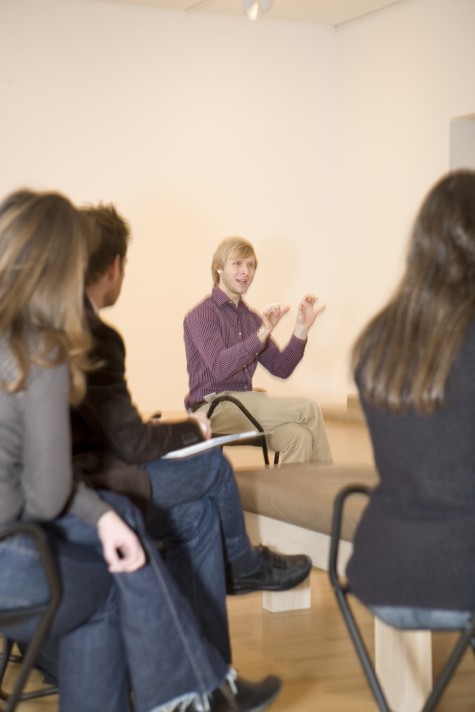
Logan discusses contemporary art at a Teacher Workshop.
Eight new McDermott Interns began their nine-month tenure at the DMA in September, and they will all contribute to Uncrated in the months to come. We look forward to sharing their experiences and insights about life and work at the DMA. You can join the interns, along with other members of the DMA staff, to explore the Museum’s collections and exhibitions during weekly gallery talks on Wednesdays at 12:15 p.m.
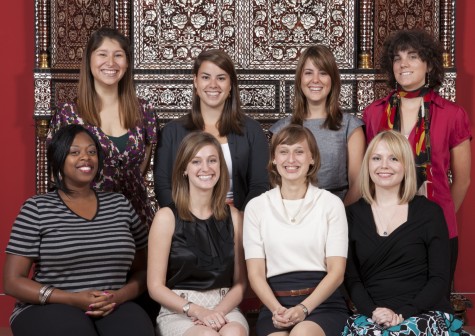
Welcome to the 2010 - 2011 McDermott Interns!
Lisa Kays is the Manager of Adult Programming at the Dallas Museum of Art
